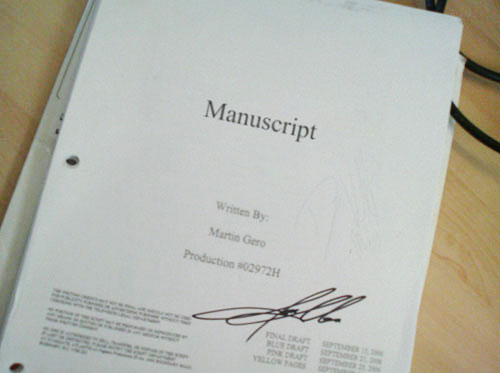When most people think of editing, they think of correcting spelling and grammar. To publishing industry professionals, this is known as copyediting. There’s also developmental or content editing, which corrects weaknesses in the story itself. This past year, I’ve had the pleasure of learning how to developmental edit from a professional editor with twenty-plus years of experience: Adam O’Connor Rodriguez, senior editor of Hawthorne Books, freelancer, and adjunct professor in Portland State’s publishing program. Developmental editing is a difficult subject to tackle in the classroom because it’s more art than science—and unlike copyediting, there’s no manual for it. The only way to learn it is through experience. Since developmental editing is such a valuable skill to have in the publishing industry, I’ve collected seven useful tips I learned from Adam to help you get started.
- Restrain your inner copyeditor. You can’t get bogged down in fixing line-level edits and pay attention to narrative-level issues at the same time. Instead, a developmental editor must focus on things like:
- Structure: Does the sequencing work well, or can it be improved? Does the story begin and end in the right places? Do parts of the story seem too long or too brief? Do parts seem too quick or too slow? Should any parts be reordered or cut? Is there anything that needs to be added to the story?
- Narrative: Are there any weak spots or inconsistencies in the plot? Any plotlines that were never resolved or that should be cut? Anything that doesn’t seem realistic in the context of the story?
- Language: Are there any quirks of wording or grammar that crop up repeatedly throughout the text? Is there too much or too little description? Are there too many or too few modifiers? Is the passive voice used too often? What are the best elements of the writer’s style?
- Dialogue: Are there any filler words? Is there any dialogue that doesn’t move the story forward? Are there lines that are predictable or clichéd? Are characters’ voices consistent? Is the writer (unsuccessfully) trying to portray an accent?
- Characters: Are the characters underdeveloped or overdeveloped in proportion to their roles in the story? Do they think and act consistently throughout the narrative? Are there any unnecessary characters?
- Your mission as a developmental editor is to make the story the best it can be. The above list might make it seem like all developmental editors do is tear manuscripts apart, but in truth they also make note of the things that worked well for the story and encourage the author to play to those strengths. Even if the first draft of a manuscript is extremely rough, you should be able to spot the potential within it and help the author make that potential a reality.
- You are the editor, not the writer. It’s not your job to take over a story and make the author rewrite it in the way you think it should be told. Your job is to enhance and refine the story as the author envisions it. The line between editing and taking over can sometimes be a fine one, but it helps to remember that you can only offer expert advice, not issue orders—ultimately, the author has final say.
- Never tell an author to scrap a story and write something completely different. Period. This doesn’t help the writer to improve and is therefore useless advice.
- Establish the right tone in your relationship with the author. This is one of the trickiest aspects of developmental editing—you’re aiming for a delicate balance of expert authority, toughest critic, and staunchest supporter. Again, the best way to learn how to do this is through experience.
- Good editing is good writing is good reading. Your skills in developmental editing will improve as you learn to better identify good writing and how to achieve it, and the best way to do this is to read as many examples of high-quality writing as you can. You can find such works through internet discussions or with the help of your friendly neighborhood librarians and English professors.
- Leave the literary criticism in the classroom. In developmental editing, you need to understand a story on its own terms and not in the context of a theory or the broader cultural conversation. Remember: your goal is to turn a manuscript into the best version of itself, not try to make it fit with a selection of other books.
Even this helpful list won’t make you an expert overnight. If you’re interested in developmental editing, read lots of high-caliber writing, do some writing exercises, and find opportunities to critique manuscripts. Always remain professional and open to learning something new. Experience will be your best teacher in developmental editing, so in the immortal words of Nike: Just Do It.®

